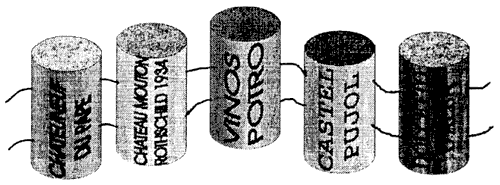
Cork rings for the support of round-bottomed glass apparatus (flasks, etc.). were already in use in the early 1900's and probably were introduced much earlier. They have such a series of advantages that their use has survived many possible substitutes available with the technical advances made in composition materials.
Cork is chemical and heat resistant. It gives glassware a very solid support. It is soft but not spongy or deformable. It presents no scratching or hard areas where glassware can be nicked or marked, and it has non-skid properties that hold on all kinds of surfaces.
| Cost of Cork Rings | |
| I.D. | Cost |
30 mm |
$6.21 |
60 mm |
$7.48 |
90 mm |
$9.04 |
120 mm |
$17.95 |
150 mm |
$19.82 |
180 mm |
$20.65 |
One drawback is the cost of cork rings, which we quote in the table taken from Baxter Scientific's 1994/95 commercial catalog. While a number of home-grown alternatives to the smaller cork ring sizes are employed (we have seen everything, going from egg boxes to discarded chunks of rubber hose), the larger sizes are difficult to substitute. Usually the "nontraditional" materials are chemically nonresistant.
A Happy-time Alternative
We have found that wine corks can be shaped into strips, strung with copper or steel wires going through a couple of punctures in each cork. Corks have an average diameter of 2.0 cm but range in lengths from three to five cm. Once prepared, the strip can be cut to give a ring of the required circumference (about 38 cm for a ring with I.D. of 12 cm, 57 cm for I.D. 18 cm) and the wires knotted. This arrangement is quite resistant and can be rewired as many times as needed. The quality of wine corks can be excellent, made from one solid piece (in the more pricey wines), or, in the cheaper brands, made from compacted cork, which is slightly less resistant to wear and tear.
A quick way of starting is to have a word with the managers of local restaurants. The stands becomes a catalog of the group's consciousness of health-related scientific results and vintage preferences.